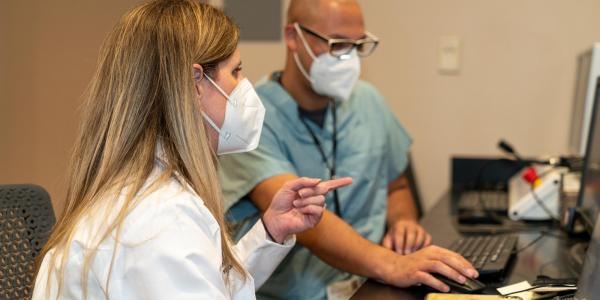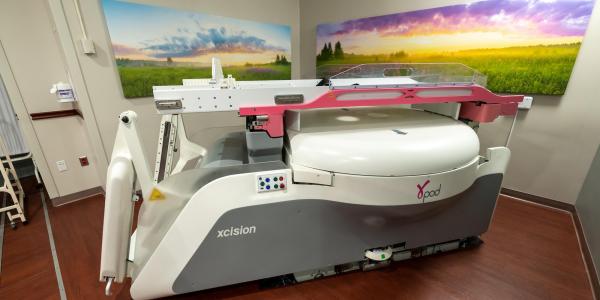Partner Content
A diagnosis of breast cancer is scary. Patients and their loved ones may be uncertain, wondering what to do next. But there is good news — the University of Maryland Medical Center is always working to develop treatments that are more comfortable, efficient, and effective, giving patients the peace of that which comes with world-class care.
GammaPod, the first radiation therapy system dedicated specifically to treating early-stage breast cancer, was invented, studied, and implemented by faculty of the University of Maryland Marlene and Stewart Greenebaum Comprehensive Cancer Center (UMGCCC). The therapy has been associated with a decrease in short term side effects to other radiation therapy for the breast by targeting beams directly to the breast tissue, delivering a higher dose of radiation to tumors and less radiation to nearby vital organs like the heart and lungs.
Unlike other forms of partial breast radiation, GammaPod is non-invasive and does not require daily treatments. Standard treatment for whole breast radiation after surgery for early-stage breast cancer requires anywhere from 15 to 33 daily treatment sessions, and other forms of partial breast radiation therapy often involve at least 10 sessions spread over five days. By comparison, GammaPod treatment typically only requires one to five sessions. A unique form of accelerated partial breast irradiation, GammaPod focuses radiation on only the highest risk areas affected by cancer. In appropriate candidates accelerated partial breast irradiation prevents cancer recurrence just as well as longer courses of radiation to the entire breast.

GammaPod treatment uses an approach called stereotactic body radiation therapy, which is gentler on skin and healthy breast tissue. Patients can also expect potentially fewer cosmetic side effects compared to longer courses, such as scarring or discoloration of the breast tissue, and may experience less itching or burning than they would after traditional radiation treatments.
Doctors and scientists at the University of Maryland developed GammaPod, which the U.S. Food and Drug Administration cleared for use in 2017, and the University of Maryland Medical Center is the first facility in the world to use the new technology to treat patients. GammaPod is proven to be safe and effective for delivery of radiation. A variety of clinical trials show the potential to improve cosmetic outcomes, improve patient satisfaction, and improve convenience of care for early-stage breast cancer patients. GammaPod is also just one of the latest treatment options invented and offered at UMGCCC; breast cancer patients also have access to other advanced treatments including proton and thermal therapy.

Treatment plans are unique to the needs of individuals, and decisions about which treatments to seek should be made between patients and doctors. Candidates who may be well-suited to GammaPod therapy may include, but are not limited to, patients who have early-stage breast cancers (stages 0, 1), are age 50 or older, and are eligible for lumpectomy. You can call 410-328-6080 for more information or to speak with a radiation oncologist to see if you are a candidate, or visit the University of Maryland’s website to make an appointment.
A diagnosis of breast cancer may not be good news, but patients have options. Researchers are always working to offer new and improved treatments, and GammaPod is a game-changing strategy to treat early-stage breast cancer with fewer health and cosmetic side effects, as well as increased comfort and convenience. Learn more about GammaPod today.

